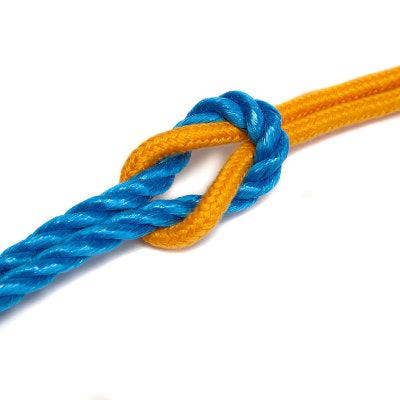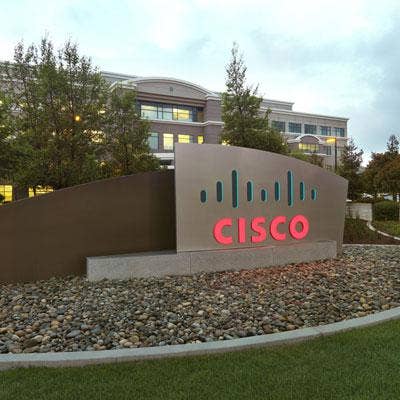ThousandEyes CEO Talks Cisco ISR Integration, The Need For Partners Helping Customers Move Forward In 'A Cloud-Centric Environment'

Lad On The Record
Mohit Lad launched ThousandEyes in 2013 alongside a team of Ph.D. graduates after seeing that the internet had become the backbone of many enterprises that were relying on something they didn't fully understand. The San Francisco-based company is filling in the gap by building software that monitors internal and external network performance to improve application delivery, infrastructure investments and visibility.
"Customers are moving away from these dedicated MPLS environments into more internet-connected branches," said Lad. ThousandEyes smart agents are deployed across the internet and within an organization to reveal network topologies, dependencies and behavior. The vendor has nabbed customers such as Twitter, eBay and several top U.S. banks, as well as partners such as Dimension Data.
In an interview with CRN, Lad talks about ThousandEyes' market differentiation, integration with Cisco routers and channel strategy.

What market trends spurred 100 percent bookings growth for ThousandEyes in your fiscal year 2017?
There are a few trends that are really challenging the market and exposing the need for something like ThousandEyes. One is cloud, Infrastructure as a Service, and all of that. The other thing we've seen is customers are moving away from these dedicated MPLS environments into more internet-connected branches. When you do that, you are relying on the internet as a backbone, which is unmanaged. We can provide a lens -- almost like a Google Maps view -- of exactly what portion of this public environment is being used, where the congestion might be, how the connectivity is changing, and everything you need to know to instantly be able to get on top of performance issues.

What was the genesis of ThousandEyes?
We saw the internet had become the backbone of the enterprise. This industry of network management was built around a control environment -- that assumption was out the window. We saw the gap. We realized you needed a clean slate approach to build something for today's environment where control is not really a reality. We're based on the premise that you're operating in a world that you really can't predict what you depend on and where the application sits, but you still need to manage these environments. We took it upon ourselves to make sure that we can provide something that can make them realize that they can actually be in control in these internet-centric environments.
With ThousandEyes, we essentially make enterprises feel like their Office 365 application is actually sitting inside their data center and help them really understand what is going on.

You've integrated with Cisco Integrated Services Routers and Aggregation Services Routers. Talk about your Cisco relationship.
We have a close partnership with Cisco and have been working very closely with their enterprise routing team as well as other different groups as well. The ThousandEyes data collection agents sit on the ISR 4000 [series] now. … Cisco with ThousandEyes can become more of a management platform; it's not just a router. So with a third-party application sitting on top giving customers an extended view of their network environments, [this] really uncovers the boundaries of what is in your environment and the internet. It's a really good win with Cisco, and for us as well because of the ISR footprint.

Can you give me a use case with Cisco and ThousandEyes?
The vision of this one partner is ThousandEyes packaged into every single ISR that goes out to their customers. Because with that, they can turn ThousandEyes on -- there's a software switch -- and within seconds get a comprehensive view of the entire customer network topology internally as well as externally going out to all the cloud vendors. So they're empowered to suddenly manage the customer environment and have this holistic view on a customer environment that they never had before.
If you have Cisco ISRs on your branch office, you can literally run it as a container, turn it on -- it's a very low footprint -- and it gives you a management lens. Cisco partners that want to give their customer an extended level of service and a higher level of visibility, we're a great company to work with.

Do you see yourself as an Internet of Things player?
Absolutely. We're working with manufacturing companies that are living in a more connected world. There are some really interesting use cases to ensure their various components can talk to each other over their internet and stay connected.
We typically get started with something specific as a use case, but then customers realize there's so much they can do with the product because what we're doing for them is simplifying the internet. There's only more and more stuff going over that environment – the user experience over the internet.

Can you give an IoT-specific use case?
One manufacturer, which is a multibillion-dollar company based in Europe, has a lot of connected devices but they are operating in an industrial setting. We're bringing them online and keeping them connected so they can communicate with each other. We're helping ensure that the network they're relying on is reliable or ensuring their devices can talk to each other in a timely and reliable manner. Keep in mind that we're not sitting on the devices themselves, but we're helping them manage that environment and that network they're using to ensure their IoT platform continues to operate. This is in a sort of legacy manufacturing environment. So we're talking about transformers and so on.

You launched your Partner Program in June 2016. What does your channel look like?
We now have more than 60 channel partners including the likes of Dimension Data, 20/20 Solutions, and we're doing very strategic deals with them. We have eight of the top 10 financial [companies] in the U.S. … We launched this about a year ago, and until then we were fully direct. At this point, [indirect revenue is] a lot more than we were anticipating because the response has been positive. We very much want to engage the channel in every deal. We need to find the right partner who understands our concept of an ecosystem.

What type of solution providers are you seeking?
If the partner only cares about margins, and doesn't really consider themselves strategic or a trusted adviser for their customer, they're generally not the right partner for us.
The kinds of partners we're looking for are the ones that want to create a bit of a differentiated service compared to others. We want people who want to be strategic with customers and want to help them move forward in a cloud-centric environment. We work well with partners who have a practice around cloud or around modern network environments -- which are internet-centric environments -- and want to bring better software into their play.

Geographically, where are you looking to on-board partners?
We're getting pretty global. We are looking for partners in EMEA; that's a big focus for us. In North America, we have been working here for the last few years and have a good base of accounts that we're working in. We also just started to turn on Japan. We just signed up one of the biggest partners there. … They've integrated ThousandEyes into their own business offering. It's one of the largest networking partners [and] Cisco resellers in Japan.

Talk about market momentum.
The company is continuing to grow. We're not only growing the bookings, but we're opening up new regions, which is exciting. We are adding about three to five Fortune 500 customers every quarter at a minimum. We're starting to build teams in different parts of the world. Our dollar revenue retention, which is around just how much our existing customers buy, is higher than the industry standard for SaaS companies.

What is your message to the channel community?
We launched in June 2013 and we're growing really well. We have offices in San Francisco; Austin, [Texas]; London; New York [and] we're launching in Asia. We're backed by [vernture] capital firms like Sequoia Capital. … Really it's that ThousandEyes is not a point solution; it's a platform. It's an ecosystem that you can plug into to have a good experience in a cloud-first, internet-first world.